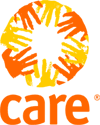So, the Fourth ACF Annual Report is upon us. It has been exciting being part of the process of producing it and therefore hearing more than others about some of the great activities we’ve been doing.
Although there are now fewer ACF areas, there’s still a lot of great work going on in Nairobi and Naivasha (Kenya), Kumasi (Ghana) and Antananarivo (Madagascar). Picking out a highlight from each project area:
- In Nairobi: Staff of Nairobi City Water and Sewerage Company (NCWSC) conducted an exchange visit to Uganda’s National Water and Sewerage Corporation (NWSC), in order to discover more about the way NWSC has been able to mainstream its pro-poor activities, emphasising upon both commercial and social mandates. Their pre-paid dispenser project which enables customers to purchase water through tokens (see blog post below) also attracted attention and has led to proposals to fund similar work in Korogocho and Mukuru, two of Nairobi’s informal settlements.
- In Naivasha: Over 20km of water pipes were laid from source to the informal settlements of Kamere and Kwa Muhia, so that over 15,000 residents now have improved access to water. Eight kiosks were built, each with a storage tank and defluoridation units, so that customers can purchase water that does not cause fluorosis (see blog post below). A main storage tank ensures that even in dry times, water will remain available.
- In Kumasi: Many issues were resolved – for example, the relationship between the water utility Ghana Water Company Limited (GWCL) and the community was improved through better communication, the cost of using a toilet previously built by the project was increased (to cover operation and maintenance and ultimately dig a new borehole) and through marketing and good service, the number of consumers for both water and toilets increased. These changes may sound like a small part of the project, but are essential to sustainability – arguably as important as the building of infrastructure.
- In Antananarivo: A sanitation advertising campaign has been taken and expanded under the ‘Kabone Madio’ (Clean Toilet) brand (see also blog post below). The campaign has been multi-media and even includes a mobile advertising vehicle. A small revolving loan fund set up to help potential customers has been operating with 100% repayment rates. Around 5,000 people have benefited through sanitation improvements.
And some key lessons learnt in the process:
- Expose decision makers to appropriate and sustainable models for service delivery and institutional arrangements – but be prepared for it to be a challenge to bring such changes
- Involve all of the stakeholders from the planning stages onwards and build partnerships through that – with formal and informal service providers, asset holders, CBOs and others
- Personal contact is an important part of any marketing strategy for the uptake of toilets; active communication channels are essential to achieve sustainable change
Enjoy it!





Pingback: Building sustainability into the project in Kumasi | African Cities for the Future